Seed Saving Secrets: Harvesting and Storing for Future Gardens
- December 29, 2023
- 0 comment
Discover the art of seed saving with our guide on how to harvest and store seeds effectively, ensuring a sustainable and biodiverse future for your garden.
Unlock the timeless secrets of seed saving and step into a world where each tiny seed holds the promise of future gardens. As the globe tilts towards sustainable living, the art of saving seeds becomes not just a thrifty gardening hack, but a profound act of preserving our planet’s diverse flora. Journey with us through this essential guide, where we unveil the techniques of harvesting and storing seeds, ensuring that the beauty and bounty of your garden endure for seasons to come.
Why Seed Saving Matters
Seed saving transcends the simple act of preserving seeds for the upcoming planting season. It’s a commitment to the preservation of our planet’s extraordinary genetic tapestry and a step towards conscientious environmental stewardship.

When you save seeds from your healthiest and most robust plants, you’re not just preparing for next year’s garden; you’re actively participating in crafting a legacy of diverse, resilient crops. This practice sustains plant varieties that may be rare or have unique qualities, safeguarding them against the risk of extinction. Moreover, it allows gardeners to adapt to changing climatic conditions by selecting seeds from plants that have thrived in specific environments. In essence, seed saving is a powerful tool for building a sustainable future, one seed at a time.
Choosing the Right Seeds to Save
Embarking on the seed saving journey begins with a critical decision: choosing the right seeds. This choice is foundational to successful gardening in subsequent seasons. Your focus should be on robust, healthy, disease-free plants, as the seeds they produce will carry those desirable traits forward. Delving into the nuances of different seed types is vital. Heirloom seeds, cherished for their stable and consistent genetic traits passed down through generations, are often the preferred choice for seed savers. These seeds not only produce plants with predictable characteristics but also embody a heritage of gardening traditions.
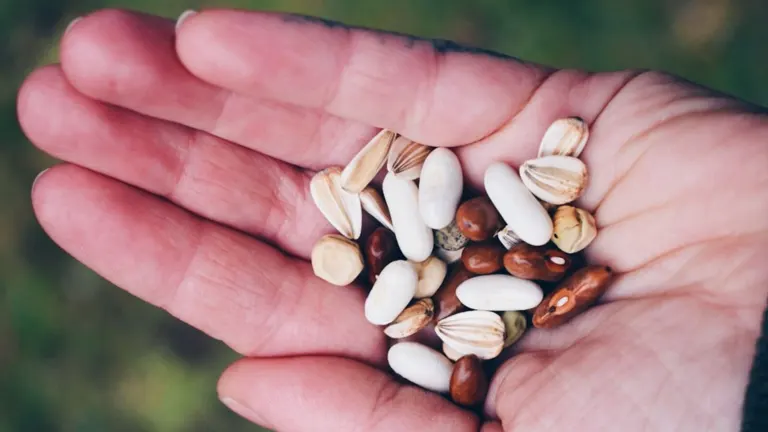
On the other hand, hybrid seeds, resulting from the cross-pollination of different varieties, can offer vigor and resistance to certain conditions, but they often don’t “breed true,” leading to less predictable results in subsequent generations. GMO seeds, which have been genetically modified for specific characteristics, may come with legal and ethical considerations and are generally not preferred for traditional seed saving practices.
Understanding these distinctions empowers you to make informed decisions, ensuring that your seed saving efforts yield fruitful and satisfying results. The seeds you choose to save today are a testament to your gardening philosophy and a gift to your future gardens.
Harvesting Seeds
The journey of seed saving reaches a pivotal stage when it’s time to harvest. Each plant variety demands a tailored approach to ensure the best possible yield. In the world of vegetables, patience is key; allow the fruit to reach full ripeness on the plant. This maturity ensures that the seeds have developed fully, storing all the necessary energy for the next season. When it comes to flowers, timing is equally crucial. Await the moment when the blooms have wilted and the seed heads turn crisp and dry, signaling readiness for harvest.

The real art, however, lies in the post-harvest treatment. Cleaning the seeds is not merely a matter of aesthetics; it’s a vital step to prevent mold and diseases. Carefully remove chaff, husks, and any residual plant material. This process might vary from simple shaking and winnowing to washing and drying, depending on the seed type. The goal is to isolate the seeds in their purest form, ready for the next crucial phase: storage.
Storing Seeds Effectively
The essence of successful seed saving lies in effective storage. Seeds, akin to tiny time capsules, contain the potential for future growth, and how they are stored can significantly impact their viability. The ideal storage environment is cool and dry, with stable, low humidity levels being paramount. These conditions prevent the seeds from awakening prematurely and protect them from potential fungal or bacterial growth.

The choice of storage containers plays a significant role as well. Airtight containers are ideal, as they shield the seeds from moisture and pests. Glass jars, metal tins with tight-sealing lids, or even specially designed seed envelopes can serve as suitable options. However, the process doesn’t end with merely placing the seeds in containers. Labeling is a critical, often overlooked step. Mark each container with the seed’s type, variety, and the date of harvest. This simple practice not only aids in organization but also becomes invaluable in tracking seed viability and planning future planting schedules.
Through these meticulous steps in harvesting and storing, seeds are not just preserved; they are primed for a future where they can sprout, grow, and flourish, continuing the cycle of life in your garden.
Tips for Long-Term Seed Viability
Ensuring the longevity of your seeds is akin to safeguarding a treasure trove of botanical diversity. The cornerstone of this endeavor is conducting regular germination tests. This not only provides a practical gauge of your seeds’ health but also offers invaluable insights into their life expectancy. Regularly testing a small sample of seeds for germination can alert you to potential problems before it’s too late, allowing you to take timely action.
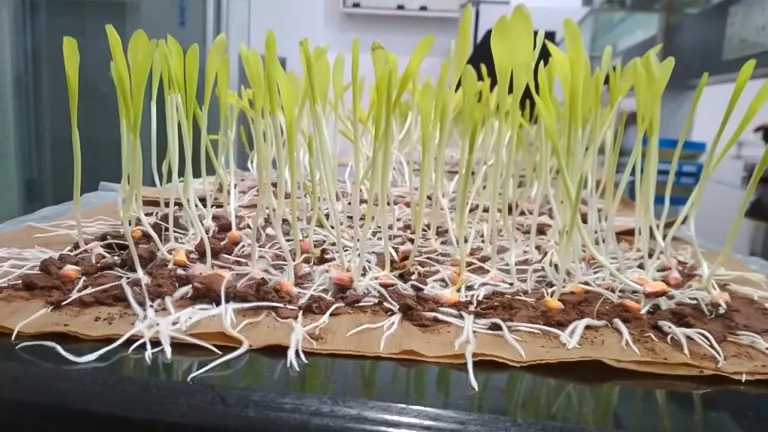
Another critical strategy is the rotation of your seed stock. Just as crop rotation revitalizes the soil, seed rotation ensures that older seeds are used and fresh ones are stored, maintaining a cycle of vitality and growth. This approach minimizes waste and ensures a constant supply of viable seeds.
Coupled with these practices, meticulous record-keeping transforms seed saving from a hobby into a science. Detailed records of seed variety, source, harvesting date, and germination rates over time provide a rich dataset that informs future seed saving strategies, creating a legacy of knowledge and resilience.
Seed Saving as a Community Practice
Seed saving blossoms into its fullest potential when embraced as a community practice. This communal approach does more than just promote biodiversity; it weaves together the very fabric of local gardening communities. Sharing seeds becomes a conduit for exchanging knowledge, stories, and experiences, enriching everyone involved.
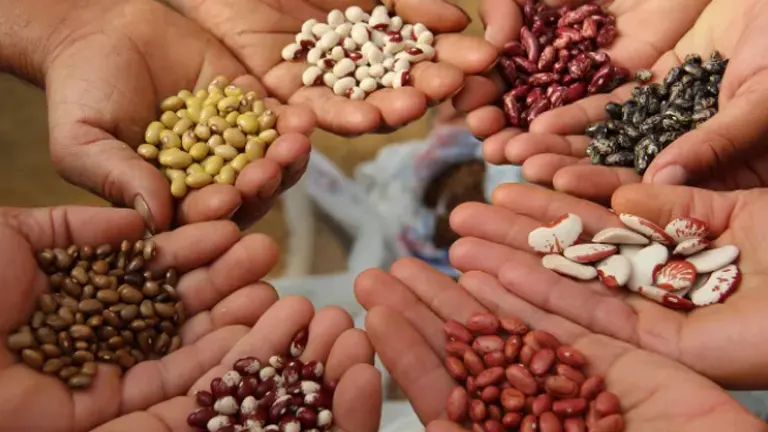
Community seed libraries, seed swap events, and gardening clubs can become hubs of activity, fostering not just the exchange of seeds but also the sharing of techniques, successes, and challenges. This collective effort not only preserves a wider array of plant varieties but also strengthens communal bonds, as gardeners unite over a shared passion for nurturing the earth and its bounty.
Conclusion
Embarking on the journey of seed saving is not merely a gardening endeavor; it’s a step towards becoming a custodian of our botanical heritage. This practice, steeped in tradition yet vital for the future, offers more than just practical benefits; it deepens our connection with nature and with each other. By embracing these guidelines, you’re not just nurturing plants in your garden; you’re sowing seeds of change and connection, cultivating a legacy that transcends individual gardens and blossoms into a global movement of sustainability and stewardship.
FAQs
- Can I save seeds from any plant in my garden, or are some types better suited for seed saving?
While you can save seeds from most garden plants, heirloom varieties are often the best candidates due to their stable genetics. Seeds from hybrid plants may not reproduce true to type. - How do I know if a seed is viable and ready to be planted?
You can perform a simple germination test by placing a few seeds between damp paper towels and checking for sprouting after a few days. This test indicates whether the seeds are still capable of germination. - Are there any legal considerations in saving and sharing seeds?
Some patented or genetically modified seeds have restrictions on seed saving and sharing. It’s essential to be aware of the legalities, especially when dealing with commercial varieties. - How does climate affect seed saving practices?
Climate plays a significant role in seed saving. For instance, seeds saved in a humid climate might require different harvesting and drying techniques compared to those in a dry climate. - Can seed saving contribute to pest and disease resistance in plants?
Yes, by selecting seeds from plants that thrived despite pests and diseases, you can gradually develop more resilient plant varieties in your garden. - Is there a way to save seeds from biennial plants, which flower in their second year?
Yes, you’ll need to provide care for the biennials through their first year and overwinter them properly, so they can flower and produce seeds in their second year. - How long can I store seeds, and does the shelf life vary by type?
The shelf life of seeds varies depending on the type and storage conditions. Properly stored seeds can remain viable for several years, but some, like onions and parsnips, are best used within a year. - What is the importance of labeling and record-keeping in seed saving?
Detailed labeling and record-keeping help track the variety, age, and origin of seeds, which is crucial for successful planting and understanding plant behavior over time. - How can I involve my community in seed saving?
Start or join a local seed exchange program, participate in community gardening projects, or organize seed saving workshops to involve and educate others. - What are some common mistakes in seed saving, and how can I avoid them?
Common mistakes include harvesting seeds too early, improper drying, and poor storage conditions. Avoid these by following species-specific guidelines and monitoring storage environments.
Unlock gardening wisdom with Seed Saving Secrets: Harvesting and Storing for Future Gardens. Share your seed-saving insights in the comments and be part of our vibrant gardening community. Your tips and experiences help others preserve the essence of their gardens. Join us in nurturing a resourceful network of gardeners and seed savers!

David Murray
Forestry AuthorI'm David Murry, a forestry equipment specialist with a focus on chainsaw operation. With over 13 years of experience, I've honed my skills in operating and maintaining a wide range of machinery, from chainsaws to log splitters. My passion for the outdoors and commitment to sustainable forestry drive my work, which emphasizes safety, efficiency, and staying updated with industry advancements. Additionally, I'm dedicated to sharing my expertise and promoting environmental awareness within the forestry community.

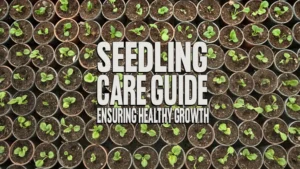
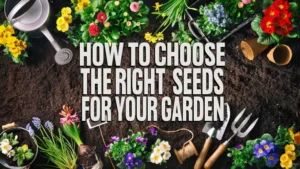
Leave your comment